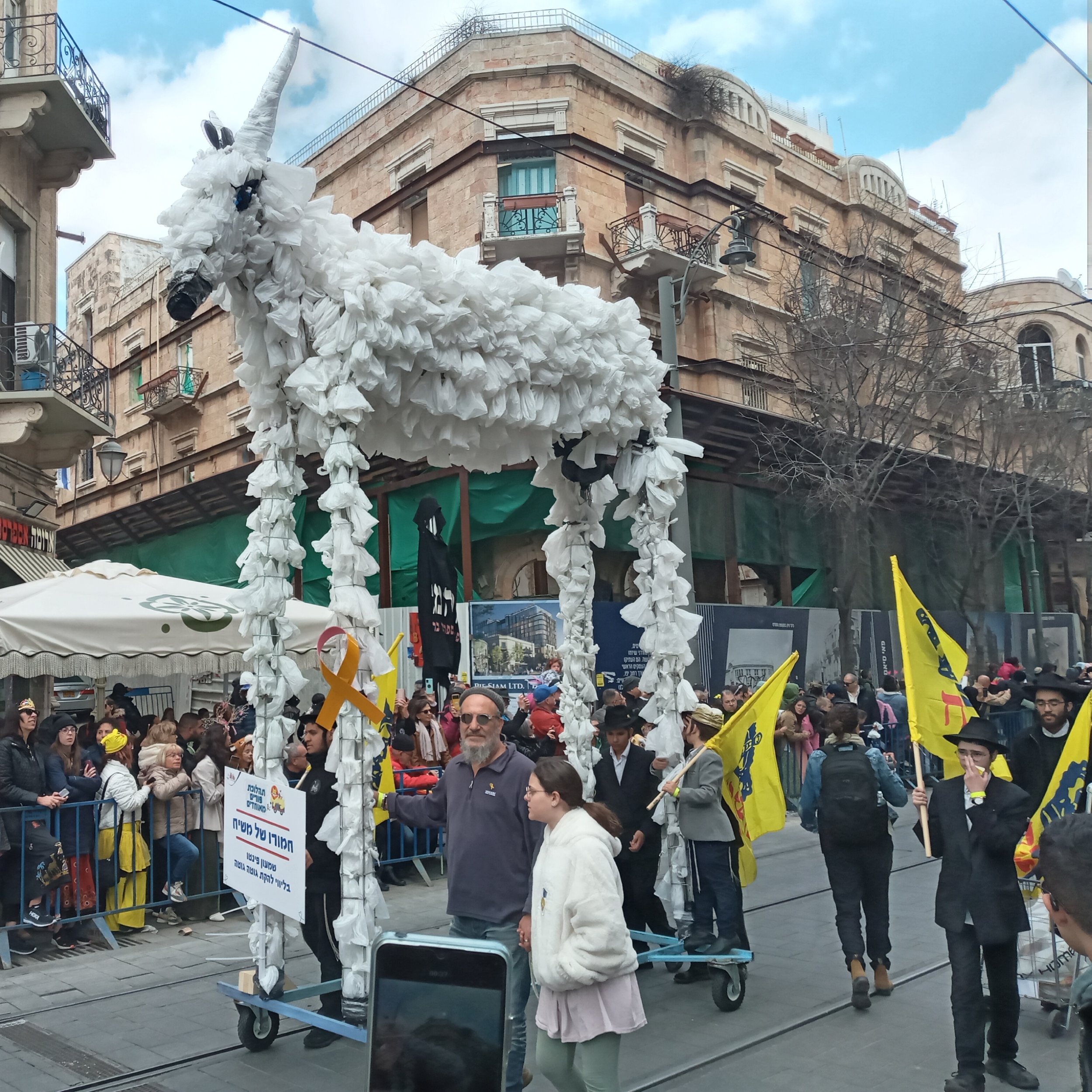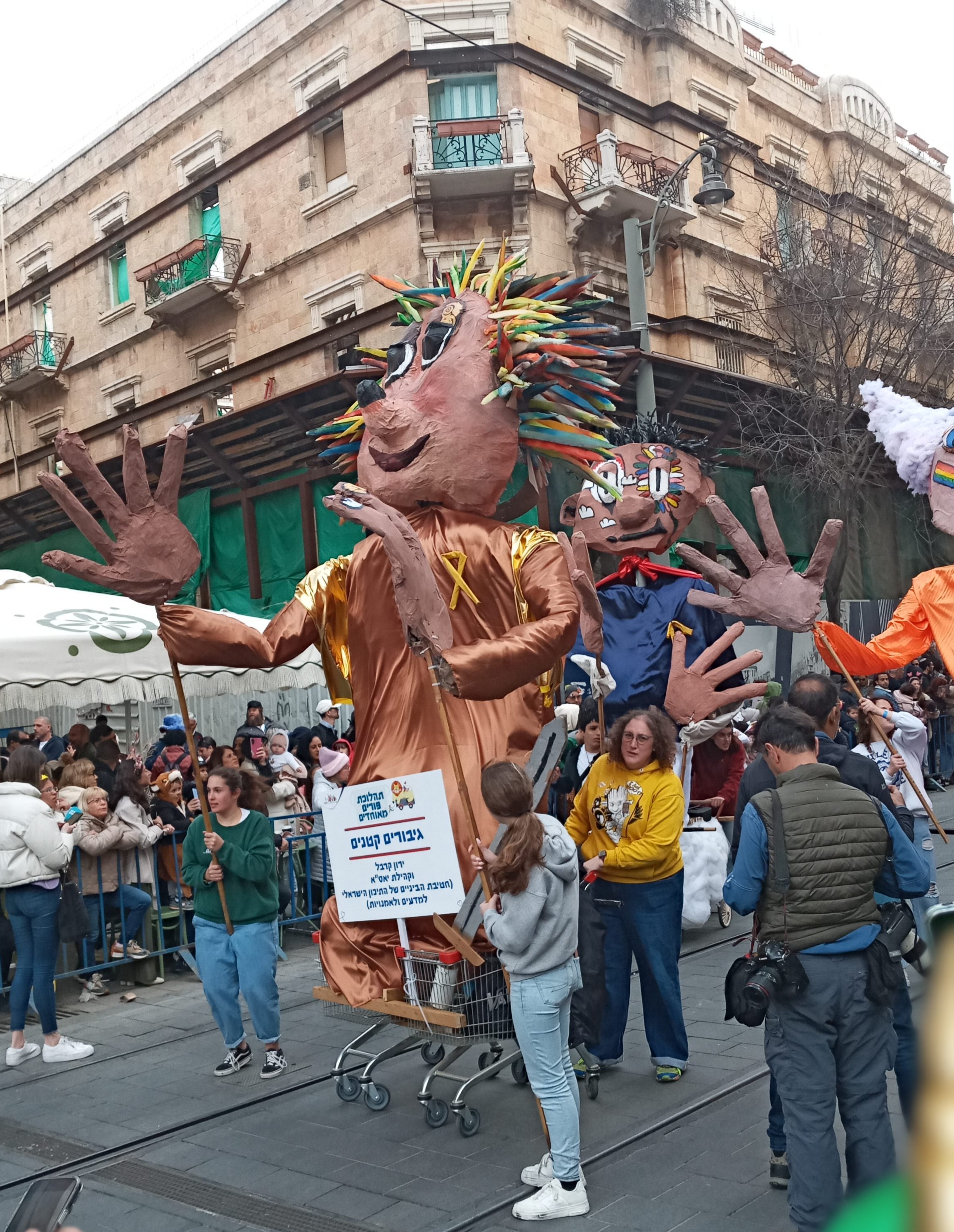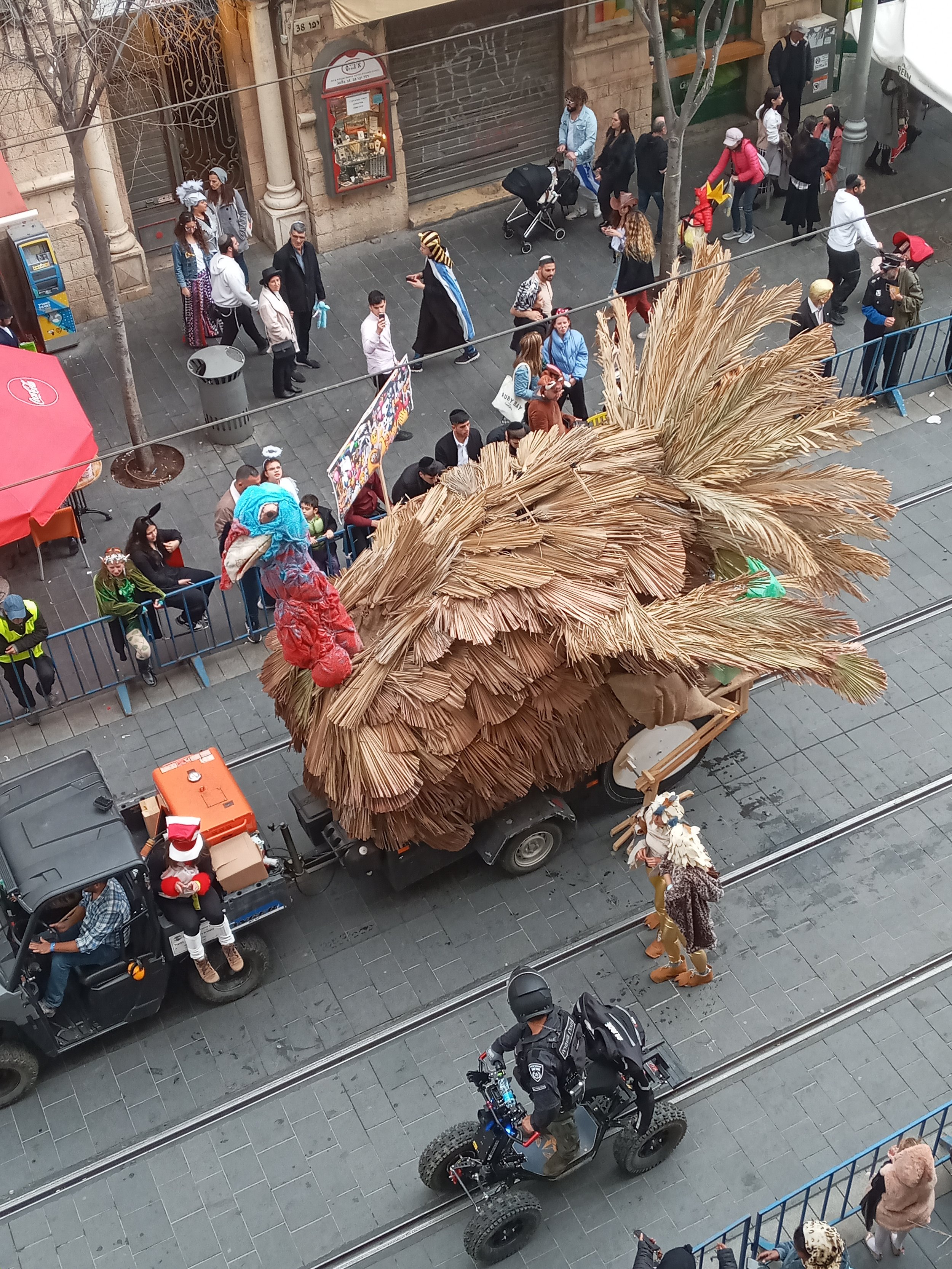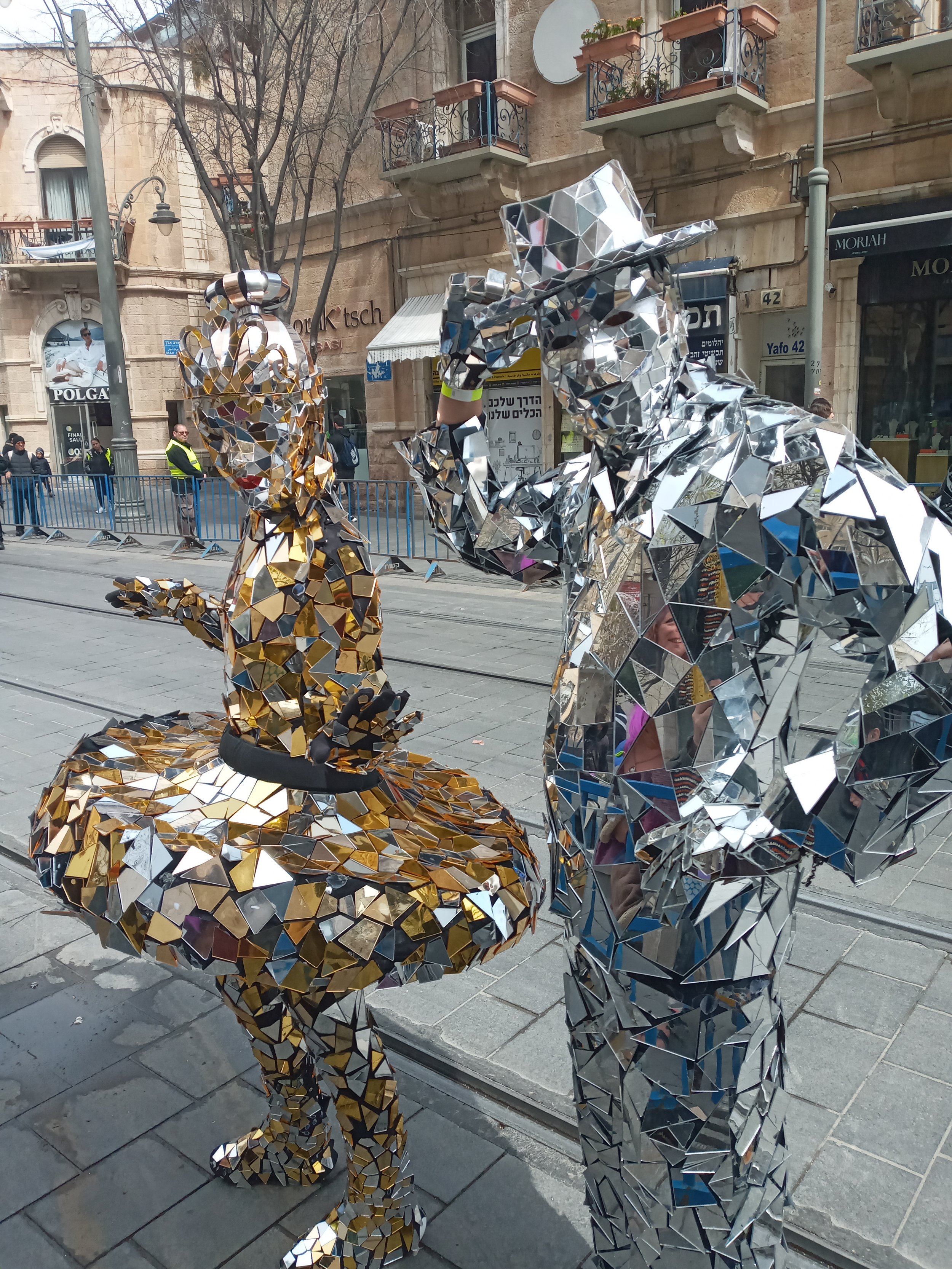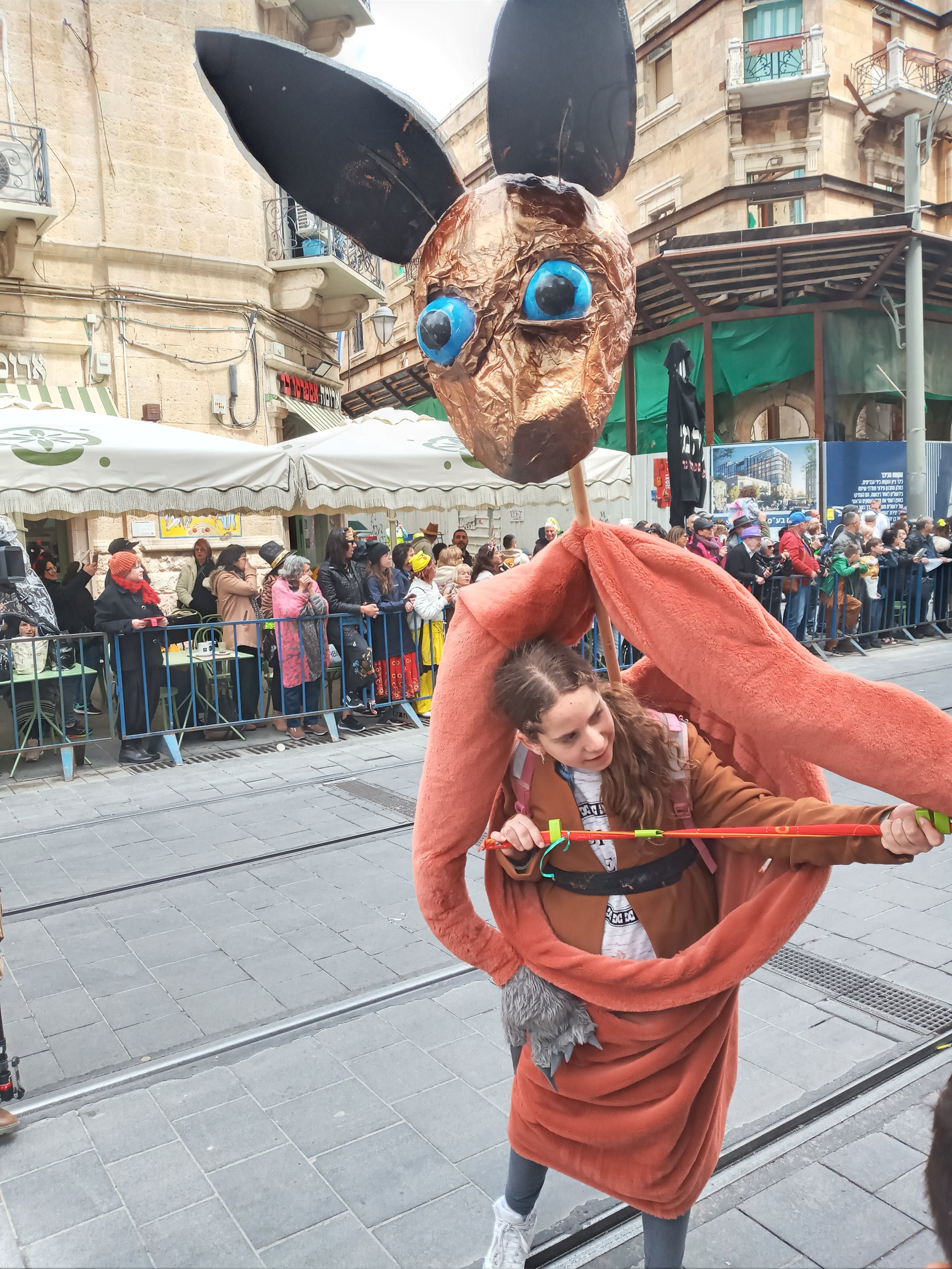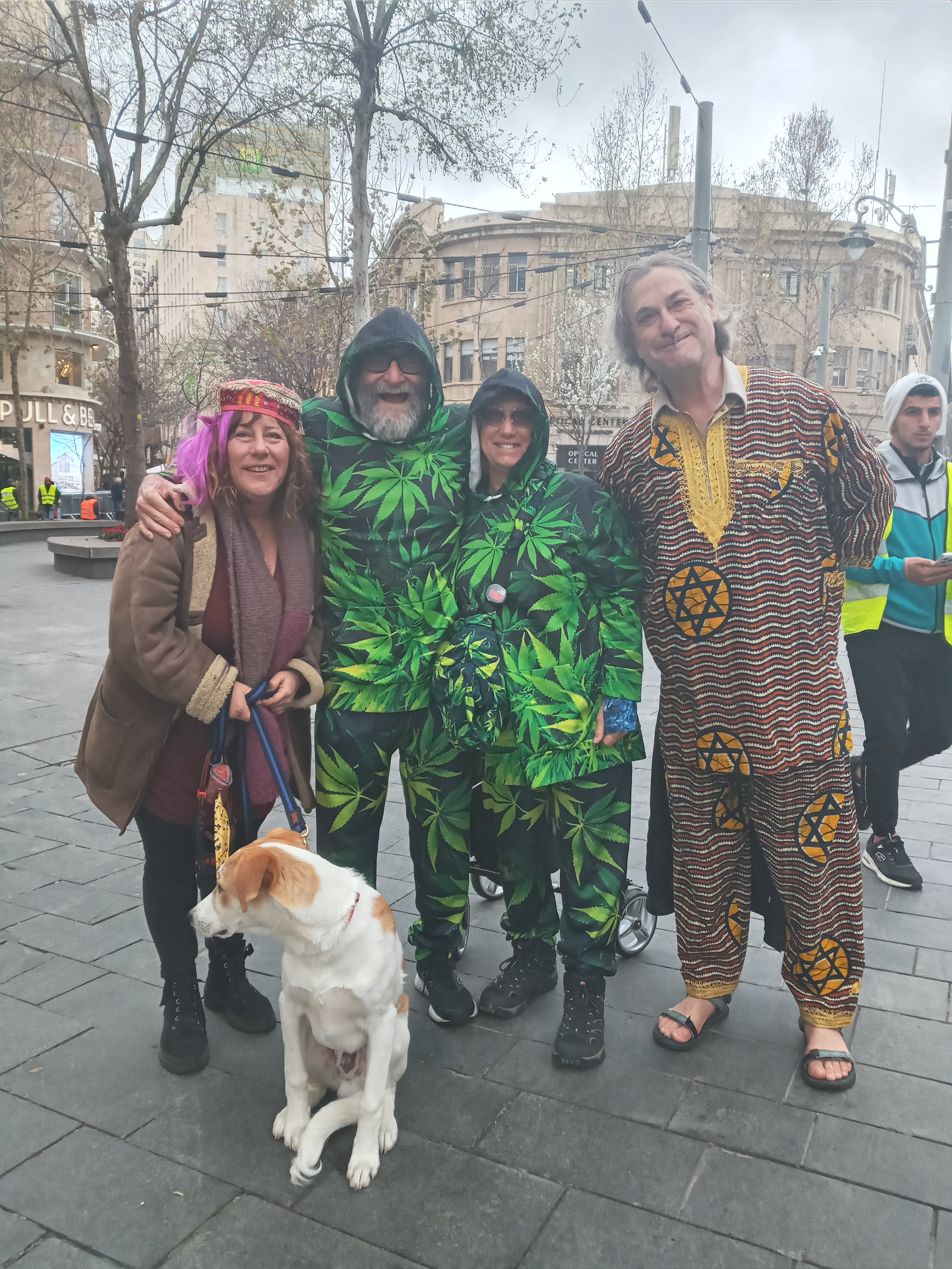Israel’s Purim Festivals Feature Glee And Despair Amid Ongoing War
JERUSALEM — As always, the celebration of Shushan Purim here on Sunday and Monday was a boozy, bawdy bacchanalia with many intoxicated celebrants dressed in outlandish costumes.
Jewish Jerusalemites exchanged traditional gifts of poppy seed pastries and liquor, and stomped, whistled and rang noisemakers each time the name of the archetype villain Haman was read during the reading of the Hebrew Bible’s Scroll of Esther.
The Talmud teaches when the lunar month of Adar enters, “joy increases.” But this year, Purim celebrations were tempered by the grim reality of war. Almost six months after Hamas’ Oct. 7 attack on villages in southern Israel, massacring some 1,200 people, not all Israelis were in the mood to party.
READ: Jerusalem’s Tower Of David Museum Gets Spectacular New Entrance
The Purim festivities were tinged with a schizophrenic twinning of glee and despair. Adding to the dismal mood was intermittent rain and a drizzle of rockets from Lebanon. Many celebrants experienced cognitive dissonance in marking the foiling of a genocidal plan in ancient Persia while a bloody war is raging today in the Gaza Strip and Lebanon against modern Iran’s proxies Hamas and Hezbollah.
For many, distress over the fate of the 134 kidnapped Israelis held hostage in the besieged coastal enclave, and the mounting toll of Israel Defense Force casualties — both dead and wounded — trumped the divine commandment to become so drunk that one cannot distinguish between “Blessed is Mordechai” and “Cursed is Haman.”
During last Friday’s dress rehearsal at schools, the war was evident in children’s choice of costumes. Unwilling to let Hamas deny him some joy, Sagiv, a first-grade student, dressed up as a tank commander. Ro’i, 9, Yawi, 8, and Hadar, 5, the grandchildren of American citizen Keith Siegel, 64, who is held hostage by Hamas, came as a racing car driver, queen and air force pilot, respectively.
The Ministry of Education issued a directive prohibiting costumes that might cause alarm or trigger anxiety. While tens of thousands of children of all ages dressed up as pirates, princes and ballerinas, none wore rubber masks mocking Hamas leader Yahya Sinwar, the mastermind behind the Oct. 7 attack.
On Monday, for the first time in 42 years, the colorful Adloyada parade was held on Jaffa Road here, downtown Jerusalem’s main drag that pedestrian share with the tram. The two-hour extravaganza of floats, marching bands and fire trucks was led by Jerusalem Mayor Moshe Lion accompanied by family members of the Gaza hostages holding a huge yellow ribbon symbolizing the return of the hostages.
Photos by Gil Zohar
Many of the 200,000 evacuees from communities near the Gaza Strip and the Upper Galilee being housed by the government in empty hotels came to the parade as an escape.
Lion had turned dismissed the hostages’ families' request to cancel the parade as inappropriate. But the pageant was toned down, and the music blared at a lower decibel. Border Police watched the parade route. One female recruit was handed a baby and asked to pose by a proud mother.
Recently re-elected following the municipal elections — which were delayed by the Hamas attack – the mayor stated: “The Purim march that will take place this coming Monday, Shushan Purim, in the streets of the capital, is meant to maintain the mental resilience of the children of Israel and to give them a space to rejoice, even in the complex reality we live in. It will be held with music, the volume and content of which was decided together with the families of the hostages.
“Jerusalem is the capital of Israel, of all its citizens and residents, and is a beacon directed light on the struggle to bring back the hostages and it, like all of Israel, embraces the families, stands with them, and will do everything to assist the return of their loved ones, as fast as possible.”
Like Jews here, Jerusalem’s minority of 350,000 Muslims have been similarly subdued in their month-long celebration of Ramadan. Unlike in past years, no festive lights festoon the Damascus Gate, the ceremonial entrance to the Old City where many throng to the nightly party following the Iftar break-the-fast meal.
The municipality has not put up street banners wishing celebrants “Ramadan mubarak” (blessed Ramadan). Nor is the traditional cannon being fired at sunrise and sunset from the Zahra Cemetery on Salah al-Din Street to denote the beginning and end of the dawn-to-dusk fast. Similarly, fireworks were not set off during the reading of the Scroll of Esther lest the noise alarm those suffering from PTSD.
The Islamic Waqf, which administers the Haram ash-Sharif compound, estimated that 120,000 Muslims attended the second Friday prayers of Ramadan at al-Aqsa Mosque on the Temple Mount, up from an estimated 80,000 the previous week. The Friday prayers ended peacefully and without any disturbances.
Gil Zohar was born in Toronto and moved to Jerusalem in 1982. He is a journalist writing for The Jerusalem Post, Segula magazine and other publications. He’s also a professional tour guide who likes to weave together the Holy Land’s multiple narratives.

